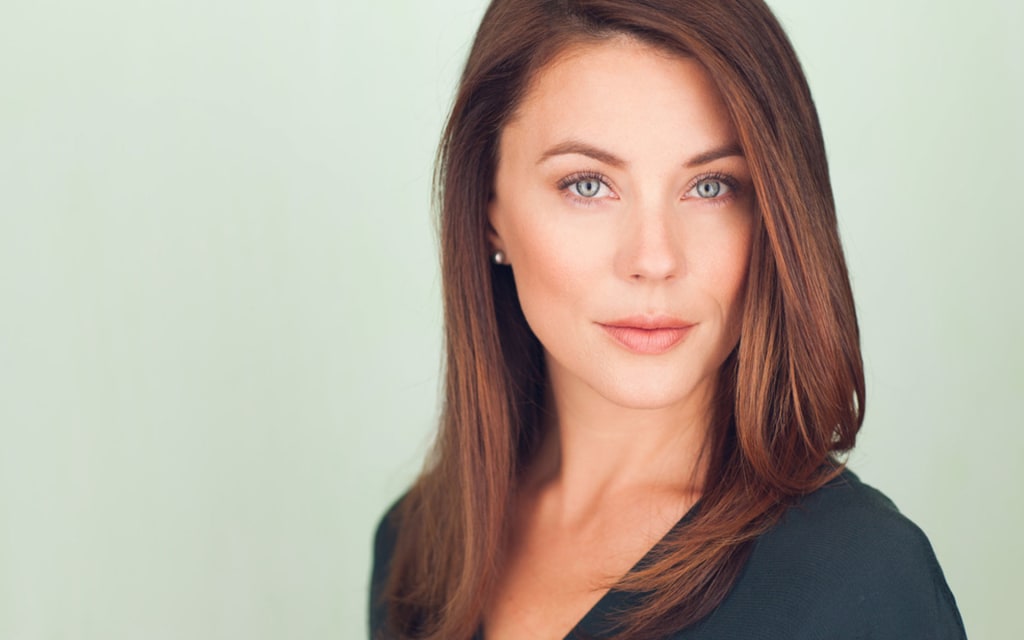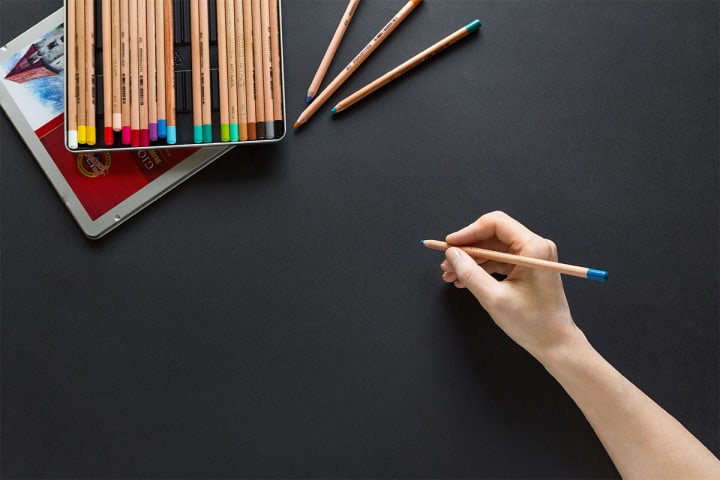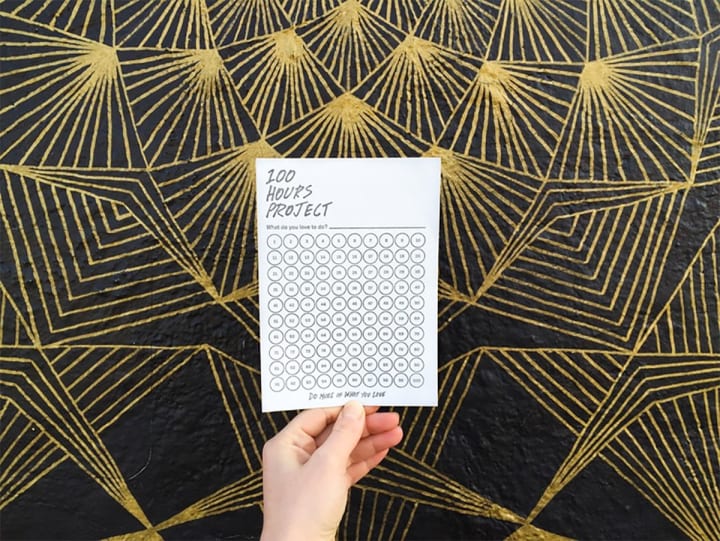What It's Like To Be A: Producer Of Play
Madcap Factory founder Molly Sonsteng contends that age is but a number, play is a necessary human right, and that grown-ups need to make more mischief.

Molly Sonsteng designs experiences that encourage adults to embrace the absurd. Armed with abundant experience in the education sphere (Sonsteng has a Masters in Educational Leadership, ran a preschool, and helped developed Carnegie Hall's curriculum) this brainy Minneapolis beauty conjured up a new endeavor, founding Brooklyn-based production house Madcap Factory. Unsurprisingly, that first word is defined as "amusingly eccentric."
The activities at Madcap range from self-help and productivity workshops to ridiculous—absurd—immersive experiences that are for grown-ups only but are purposefully juvenile in spirit. Childlike play is the crux of Sonsteng's project; she fiercely believes that play is a necessary human right and that adults must make a point to revive the carefree enthusiasm that grown ups usually trade for career stress and undesirable commitments.
From early morning dance parties to variety shows to grassroots performance art on New York City streets, Molly Sonsteng helps adults recreate their glory days and trade maturity for mischief.

Journal: In 10 words, describe what you do.
Molly Sonsteng: I encourage grown-ups to find their individual way of play.
Was there an “aha” moment in your career, leading you to adult projects?
There was! In 2014, I went to a summer camp for grown-ups in the Redwoods of California. I had recently left my career in arts administration and was on a fact finding mission to discover how I could truly add value to the world. The experience was just like a traditional kids camp with arts & crafts, capture-the-flag, color wars, etc. … but for grown-ups. Four days in the woods without devices or substances where we called each other by nicknames and were forbidden to talk about work. Intense play, zero digital communication, and absolutely no networking created a transformative environment. This was just what I was hungry for. I knew immediately I wanted to create experiences back in New York that could capture even just a tiny version of what this camp did so beautifully. For the most part, my projects evoke a similar notion of play, passion, and sense of community.
Your events have a DIY quality to them. What have you learned about work ethic and procrastination through your observations?
Most participants in Madcap’s services are working toward small, attainable goals that support passion or side projects. It doesn’t so much matter if they’re an accountant, trapeze artist, or stay-at-home parent. Of course, the goals vary depending on the size and intensity of each project. I haven’t, however, seen a difference in work ethic and procrastination. Each individual comes to their project with their own relationship to time and work habits whether they come from traditional or creative professions.

A lot of your programs seem remarkably simple in premise, like Caveday (which provides a distraction-free environment for adults to take care of whichever ‘to-do's’ they might have). What were some of the common tasks people were working on, what was the outcome, and why do you think it did or didn’t work?
[CAVEDAY] is a new initiative I’m co-creating with two like-minded friends interested in assisting people to get more done. Similar to other projects I’ve worked on, we’re not concerned with what Cave dwellers choose to work on but rather they pick a goal that’s achievable in one day’s time. The website even suggests polishing a trophy for eight hours! At the inaugural event, tasks ranged from scriptwriting to web design to needlepoint to answering emails. With light facilitation, on-site coaching support, and delicious snacks, Cave dwellers were able to simply show up and get to work with no distractions. We received glowing reviews about this kind of deep flow, phone-free work. It’s remarkable how much work we’re actually able to accomplish without unnecessary meetings, access to social media, or news alerts. We’re excited to further develop the concept and begin offering monthly [CAVEDAY]s.

What is your favorite project born of the “100 Hours Project” so far?
The 100 Hours Project is a simple idea. Pick something you love to do and dedicate 100 hours to it. The diversity of projects is what excites me most. Hard to pick a favorite. A few participants are spending 100 hours learning a language. One is simply putting more time into reading fiction. Another is spending 100 hours with palm readers and compiling the various readings for a coffee table book.
Currently, close to 300 participants are engaged in the project.
Other than receiving a note in the mail a few months after starting, there is no accountability built in. My friend & I made this as an art project rather than a business. We’re not concerned with whether or not a participant actually reaches 100 hours. Rather, we see it as a gentle reminder to spend your time with more intention. A simple letterpress card to hang on your fridge reminding you to do more of what you love.
Do you find a disconnect between the overall communities that come out of the events, or do you find a lot of recurring/overlapping engagement across the board?
There’s a thread that ties my audience together regardless of what initially drew them in. And that’s a hunger to actively participate in something while, at the same time, finding community. Each of my initiatives approaches play differently but they all create a sense of belonging. Someone I first met as a Daybreaker volunteer might attend [CAVEDAY] to design a marketing plan for their business. Someone working on 100 Hours of piano might conclude their project by performing in First Time Out, my monthly variety show for first timers. I combine creativity, daily joy, and self-improvement in the same category of simply living life with more intention. I strongly believe that investing time in creative pursuits is, in essence, investing in self-improvement which then leads to daily joy.

Performance at First Time Out Variety Show (Photo by Rodrigo Lizarraga)
Having worked with children as well as adults, is the notion of “adult play” intended to be an extension of children’s play, or do you see the two differently?
To me, play is play. According to article 31 of the Convention on the Rights of the Child, “Parties recognize the right of the child to rest and leisure, to engage in play and recreational activities appropriate to the age of the child and to participate freely in cultural life and the arts.” I argue that play is a necessary human right, integral to the experience of being human. It need not only be reserved for children. So… short answer, no. I don’t see the two differently. I always have toys & art supplies on hand. My backpack contains crayons, letter writing supplies & postcards, a spinning top, a deck of cards, stamps & a stamp pad, etc. I’m ready, at a moment’s notice, to turn any meeting into an arts & crafts session. Several of my current projects are just extensions of the programming I created at the kid’s camp: talent shows, field games, playing dress up, art projects. The only difference is I’m primarily targeting grown ups.
What is the most essential quality you see in children that adults typically lack?
I see two essential qualities in children that grown-ups lack:
- A desire for adventure & make-believe and
- They’re not hindered by time
Children can make a game out of anything… or nothing. There’s a built-in sense of adventure in young people that grown-ups seem to lose. Additionally, children aren’t ruled by a schedule. They’re able to get lost in a make-believe land without fear of missing a deadline or a lunch date.
The biggest reason we lose the ability to make magic is that nagging fear of being judged. Children are unconcerned if what they’re doing seems ridiculous. The trick is in building up that indifference and promoting play at all ages. Intergenerational opportunities are a terrific way to preserve that sense of adventure. Grown-ups who double as mischief makers can act as role models to young people and vice versa. A fun example is Inconspicuous Games, field games played in high traffic landmarks… but in secret. Imagine playing Capture The Flag in Grand Central or Hide & Seek in the New York Public Library. These are games anyone can play and Inconspicuous Games adds an element of intrigue, adventure, and education for all ages.
You seem to define “adult” and “grown-up” differently. Do you see a difference in the two?
Yes. When speaking of play, throwing the word “adult” in front of it tends to conjure a sexual tone. I’ve found replacing it with “grown-up” somehow desexualizes the meaning and requires less explanation. Also, only adults say “adult.” ;)

Your production company focuses on “analogue design”—how would you define this and why is it so integral to your philosophy?
Technology & digital design aren’t going anywhere. Obviously. Our world has an intense appetite for AR, VR, 3D and there’s an endless amount of exciting growth in that space. I, however, am keen on humans connecting in real life, in real time. By stating Madcap focuses on “analogue design,” we’re essentially highlighting that we excel at designing offline experiences that promote face to face connection. That said, it’s important my company follow new trends in technology in order to understand the ever-changing market. We take on projects in the tech space, but we’ll always find a way to add a touch of surprise and delight.
What is the most promising solution to preserving arts programs in schools?Regarding education, my biggest concern with the new Presidential administration and Education Secretary is the cutting of arts funding and programming. The difference between the arts and sciences is not cut and dry. Developing a mind for the arts translates into many other skills that are usable in so many technical professions. The world as a whole is facing major challenges and we need creative minds to solve them.
In these times, it’s important that arts organizations continue offering programming to young people. Most cultural institutions have a dedicated education department that works with public school systems to provide arts programming. While this certainly is not enough, it is a way to ensure some level of arts education for young minds.
This notion of “The Absurd” is the buzzword of Madcap Factory. What is the most "absurd" thing you’ve ever done or personally experienced?
I’d like to answer by simply passing along these words from my husband. Trust me.
Have you ever had an idea so “out there” that no one was interested?
Every idea has an audience. But I’ve certainly had ideas I myself can’t quite wrap my head around to the point of conveying it to an audience. I have nearly 100 URLs and a very small percentage of them are actually in use. That leaves many absurd ideas to be developed. Stay tuned.
Do you have a specific methodology for how to come up with unique events along this central theme of “embracing the absurd” or do you let ideas come to you whenever they do?
It’s a combination of both. For in-house original projects, ideas strike out of the blue and at all hours of the day. I do my very best to track them in whatever notebook or cocktail napkin I have handy. For clients, we tend to respond to briefs and use a creative process inspired by the ideas and projects we’ve done on our own. Madcap is an ideas and execution factory where the original content and projects have been part of what draws clients in. Clients are usually interested in following those steps and initiatives. So while we do work with clients to co-create new ideas, quite often they approach us because they’re interested in leveraging our existing work.

Image Courtesy of Molly Sonsteng
Do you think your company could make sense and work elsewhere, or do New Yorkers have a certain tolerance for new experiences?
New York, without question, has access and an appetite for immersive art. But every city seems to have its own quirky and eccentric crowd that are hungry for new experiences. I do believe people are longing for more play in their lives and, so far, our experience has been “if you build it, they will come.”
Why is it important for adults to play?
It’s important for everyone to play. Define adult. Diverse experiences extend time and create memories. Time is the only finite currency we have. My true measure of wealth is not how much money I have but how I spend my time so I might as well extend it.Visit Molly's Personal and Professional websites for updates on events and more.
Follow Molly on Instagram.
About the Creator
Natasha Sydor
brand strategy @ prime video






Comments
There are no comments for this story
Be the first to respond and start the conversation.